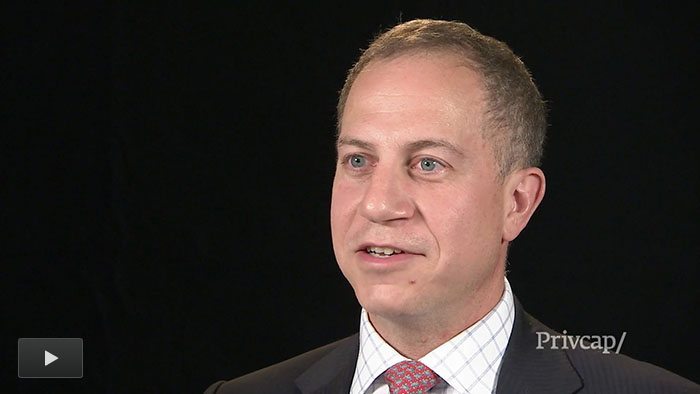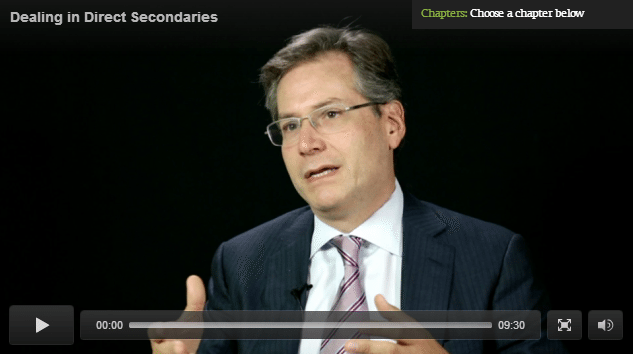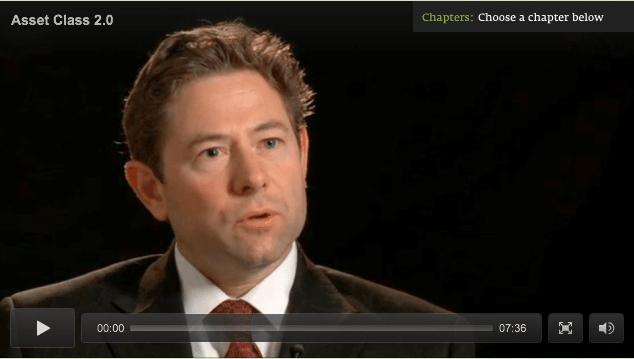Gray Wave
As hundreds of private funds reach old age, investors should beware the perverse incentives created by end-of-life misalignments.

The private funds industry needs its own Dr. Kevorkian, because it is nearly impossible to pull the plug on terminally ill partnerships.
In too many cases, partnerships that should be liquidated are instead being put on life support and slowly eaten up by fees. To their managers, these funds are worth more alive, but for the investors they are better off put to rest. Think of this as an end-of-life misalignment of interests. It is a problem for private investors that will only become more pervasive as the alternative investment industry witnesses its own version of a gray wave.
In fact, private equity’s gray wave is more advanced than the better-known one. While the baby boom generation in the United States is beginning to reach retirement age, a bumper generation of private equity and venture capital funds, born in the jubilant late-1990s, is about to enter nursing homes. These funds are mostly structured as limited partnerships with 10-year lives and two, automatic one-year life extensions. After year 12, if the fund has not sold off its remaining assets, the parties involved start looking at each other uneasily, because typically each additional one-year extension requires a vote. Put another way, a bus driven exclusively by the general partners for more than a decade now needs to start taking directions from its fatigued passengers.
There are roughly 400 private equity funds and a whopping 1,200 venture capital funds that will cross this critical 12-year line in the next three years, according to research by W Capital Management, a firm specializing in private equity liquidity. While each of these funds has its own story, ranging from heroic to tragic, it is safe to say that a significant number of them are not in good shape, as measured by their returns to investors. The funds that, to date, have delivered flat or negative returns to their investors are at the greatest risk of manifesting end-of-life perverse manager incentives.
Let’s examine this problem anecdotally: Imagine a venture capital fund, Pervasive Partners II, that raised $400 million in 2000 (a year in which a tremendous number of private equity and venture capital funds were raised). At the time, the founders of Pervasive Partners had the wind at their backs—several dot-coms they backed between 1994 and 1999 enjoyed incredible initial public offerings or were acquired at impressive valuations. Raising their next fund was like shooting fish in a barrel—in fact, the Pervasive team prided itself at having shown discipline by turning capital away once their $400 million cap was reached.
Alas, the next economic cycle was less kind to the Pervasive team and its limited partners. Deals done by the second fund during the 2000 to 2005 investment period produced only a few modest successes, outbalanced by a string of duds and down-in-flames disasters. By 2011, Pervasive Partners II was showing a 0.8 times invested capital net return, taking into account both realized and unrealized investments. In other words, after 11 years of sourcing deals, investing, adding value and harvesting, the Pervasive team had managed to turn each investor dollar into 80 cents. Disappointing, but “Hey,” say the investors. “Let’s just take that 80 cents and plow it back into fresh new opportunities.”
Not so fast. Here is where the story gets even more cringe-inducing. The limited partners in the Pervasive Partners II fund do not have their full 80 cents back yet. Over the years, they have only been given back 60 cents per dollar contributed to the fund. The remaining 20 cents of value is tied up in equity positions in two remaining portfolio companies from which the fund has not yet exited. From a fund-accounting perspective, $240 million of proceeds from investment activities have been redistributed to limited partners, but positions that the general partners say have a total net asset value of $80 million have yet to be sold.
As the fund enters 2012, its twelfth year, the Pervasive general partners say they will extend its life for another year, as is their right. They explain that this is necessary to give the market time to recognize the value of their two remaining portfolio companies. Once conditions improve for these companies, the Pervasive team plans to exit them at their fair valuations, which they claim to be at least $40 million per company.
At this point you may ask, “If these companies were truly worth $40 million each, why wouldn’t someone come along and buy them at that price, thus bringing the long journey of Pervasive Partners II to an end?” And the answer is, “Perhaps the remaining two Pervasive II portfolio companies are not worth $40 million each, but instead are worth significantly less.” The principles of fair value accounting require fund managers to tell their investors what assets are worth today, not at some hoped-for time in the future. But not every general partner finds it easy or expedient to adhere to fair value principles.
It should be noted that in holding on to their last two assets, the Pervasive fund managers are preserving their optionality. “You never know,” they say. “Maybe a drunken corporate sailor will come along in 2013 and buy these up for $50 million each. Maybe demand for the services and technologies offered by one of these companies will surge unexpectedly; maybe our little companies will become must-haves for Google or Gilt Groupe. Might as well sit tight.” When there is no penalty for keeping an asset, even if it ultimately evaporates into nothingness, the best option is to keep it, because, “You never know.”
While sitting tight, of course, the general partners of Pervasive Partners are collecting management fees based on the stated $80 million remaining net asset value of the fund. Different funds have different formulas for calculating management fees at this late stage, but in the case of Pervasive, an annual 2 percent charged against $80 million equals $1.6 million. In year 12, this helps pay the salaries of hardworking associates and vice presidents, but by year 14 (the LPs have voted to extend the fund’s life), the operation has devolved into two founders and Blackberry, and the remainder of the annual $1.6 million not used to pay for the Blackberry goes in the pockets of the two founders. Nice work if you can get it.
In the meantime, however, the limited partners are experiencing something rather different. The stated net asset value of $80 million left in the fund cannot possibly be accurate, they believe. If Pervasive dumped both companies today, the limited partners might get back a total of $30 million, if they were lucky. As such, the true fair value of the remaining assets is more like $30 million. Each year, $1.6 million is charged in management fees (based on the higher valuation of these companies). If the fund continues until 2015 without exiting its two remaining positions, these management fees will have eaten up more than one-fourth of the true fair value of the fund. And that is assuming that in year 15, the general partners manage to sell off their last two positions for a disappointing total of $30 million (much lower than what they thought they could get, they explain). It could be worse. It could be that in year 15, the two companies need money, and a down-round of financing wipes out Pervasive’s stakes because the firm has no reserves to pony up. Or maybe the companies simply declare Chapter 7 bankruptcy and cease to exist. In these nightmare scenarios, limited partners have paid a total of $8 million in fees over five final years for the oversight of two companies that ultimately amounted to zilch.
In-kind is unkind
As the investors in Pervasive Partners II ponder their shared futures in 2012, they are aware that at the end of the year, the general partners will very likely come to them and ask for the first of what could be several life extensions for the fund. The limited partners wonder if they would do better by simply liquidating the fund, taking the $30 million they would be lucky to get and walking away with at least some cash. They worry that if they agree to extend the life of the fund, they risk getting back less money (thanks to the management fee drag) and at a later date (thanks to the fund’s extended life). Even a more optimistic scenario concerns them: the limited partners worry that a slightly better exit valuation at a later date will nevertheless be offset by the management fee drag and the opportunity cost of “letting it ride.” They decide the fund is better off dead, and dead today. When the general partners ask for an extension, the limited partners instead vote to liquidate.
And then the limited partners learn the truth about private fund liquidation, which is that it nearly never works in their favor.
A general partner can be forced by the limited partners to liquidate the fund, but the general partners can seldom be forced to sell the underlying investments. When limited partners pull the plug on a fund, the general partners have the option (and even the incentive) to hand back private securities in the portfolio companies, in what is often called an in-kind distribution.
So rather than getting back cold, hard cash at the rump-end of Pervasive II’s life, the investors get back hundreds of thousands of shares in, respectively, SeeMyFace.com LLC and SearchySearch! Inc., two companies that do not seem poised for great success. “What are these shares worth?” asks a limited parter. “Altogether? $80 million,” says a Pervasive general partner, trying to keep a straight face.
Thus comes to an end the life of Pervasive Partners II, done and dusted with a 0.8x return to investors on a fully realized basis, although the definition of “realized” is stretched here because nearly a third of the distributed value resides in the untradeable securities of two private companies with absolutely no buyers in sight.
“Now what do we do?” think the limited partners, who begin to wonder if helping the Pervasive guys keep their call options would have been such a bad thing.
Limited partner options
The fictional Pervasive Partners scenario is not far from the truth of many funds now experiencing end-of-life issues. This being the private funds industry, it is impossible to track what percentage of mature partnerships are dead-enders versus those that have promising assets yet to be maximized. But expect the anecdotal evidence to begin piling up on the side of fund managers not always acting as true fiduciaries for their investors when the end is nigh.
One investment advisor tells of a limited partner who received an in-kind distribution from a fund manager who had decided to liquidate the fund in this manner. The private securities were distributed at what the limited partner felt was a suspiciously high valuation. The investor then asked the general partner, in essence, “How the hell am I supposed to sell these?” At which point the general partner offered to buy back the securities at a fraction of the distributed net asset value. “That’s not the first time we’ve seen that,” said the limited partner.
In other words: “Here are your shares in SearchySearch!, worth $1 million. Having trouble selling them? We’re happy to buy them for $50,000.”
Then there is the story of the general partner who made a final in-kind distribution to limited partners at a value that just happened to keep the fund above its performance-hurdle rate, allowing the general partners to keep their lucrative carried interest payment.
The limited partners in Pervasive were successful in forcing a liquidation of the fund. But in reality, such a move is not easy to pull off. General partners tend to hold all the cards in these situations because, as supposed sector experts, they are best positioned to have an opinion about the value of their investments. It is hard for one group of limited partners to sell another group of limited partners on a liquidation when the general partners are saying that such an action would result in a painful discount.
Not all old funds are bad funds, of course, and most general partners do have their investors’ best interests in mind. Whether out of smarts or hope, many general partners will extend the life of their funds because they honestly believe a better valuation is down the road. They may even be willing to waive or lower management fees to create good will around these stated expectations.
And as W Capital founder David Wachter points out, there are end-of-life care techniques that allow the parties who want out to make a trade with the parties who want to stay for the ride. “If some of the LPs are oriented toward taking the best offer now, while others are not in a hurry, then the LPs who want liquidity can be bought out and the rest can let it roll,” Wachter said.
When weighing a vote to liquidate, limited partners and general partners alike should consider bringing in a reputable valuation firm to stress-test the general partner-assigned fair value.
Wachter warns that for many limited partners, the coming wave of fund tail-ends is going to force many hard and important decisions. “When you have a few funds that are in the 10- to 15-year range, it’s not a big deal,” he said. “But as these start to accumulate, they become material.”
As the late-90s fund baby boom becomes a gray wave, end-of-life misalignment is going to become a material issue for many experienced investors.
As hundreds of private funds reach old age, investors should beware the perverse incentives created by end-of-life misalignments, writes David Snow


